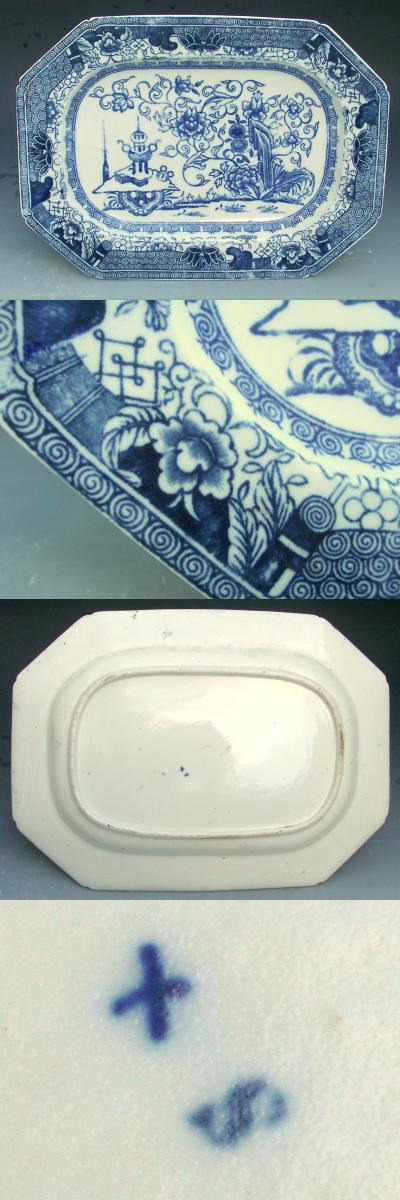
Dish, Caughley or 'Salopian China Manufactory'
Caughley (or Salopian) porcelain is the earliest known porcelain to be made in Shropshire and was produced under its two proprietors, Thomas Turner and Ambrose Gallimore. From the beginning production concentrated on transfer printed imitation Chinese porcelain table wares imported into Britain at that time, which it is best known for. The company was a major force in the porcelain industry of the late 1700s.
Most of the early under-glaze-blue decorated wares from Caughly, from c. 1775-95 are marked with an 'S'. 'So' or 'Sx', for 'Salopian'. Sometimes an impressed mark 'Salopian' are found, from the same time. The Salopian China Warehouse opened in London in 1783. The works employed a workforce of about 100 at three kilns, in the 1790s.
Turner had learned transfer printing at Worcester, and in 1775 Robert Hancock, then the most celebrated engraver for porcelain, joined Caughley from Worcester. 'Salopian' china enjoyed aristocratic patronage yet undersold Worcester. From c. 1780 there was much French influence on style and design, and gilt began to be used on its own for decoration. Those changes reflect the work of the decorating establishment of Humphrey and Robert Chamberlain at Worcester, and increasingly from the 1780s Caughley porcelain was sent away for decoration.
The founder, Thomas Turner, had an important relation with the Chamberlain firm set up in 1786 at which Godden (1981) have suggested that the Chamberlain decorating establishment at Worcester was where his Caughley porcelain was decorated with overglaze enamels and gilding..." Only the underglaze printed transfer patterns would have been applied at Caughley. Thomas Turner helped to finance the new Chamberlain business and its move to new premises in 1788. In 1793, the Chamberlain trade with Caughley ended and the Chamberlains began to produce their own porcelain.
It was perhaps that, together with the establishment (1795-96) and growth of the Coalport porcelain works, and perhaps Turner's ill health, that led in 1799 to his sale of the Caughley lease, works, and stock. The buyers were the Coalport partners Edward Blakeway and Richard and John Rose, the last named a native of Barrow and former Caughley apprentice. Caughley continued to make porcelain, much for decoration and finishing at Coalport, until 1814 when the two works were bought by John Rose. He closed Caughley, and by 1821 most of the factory had been taken down and the materials taken to Coalport for re-use.
Photo: Jan-Erik Nilsson, 2003. Text sources: The history of the factory and its wares have been investigated by Godden (1981). Caughley. A History of the County of Shropshire: Volume X, G.C. Baugh (Editor) (1998).
A